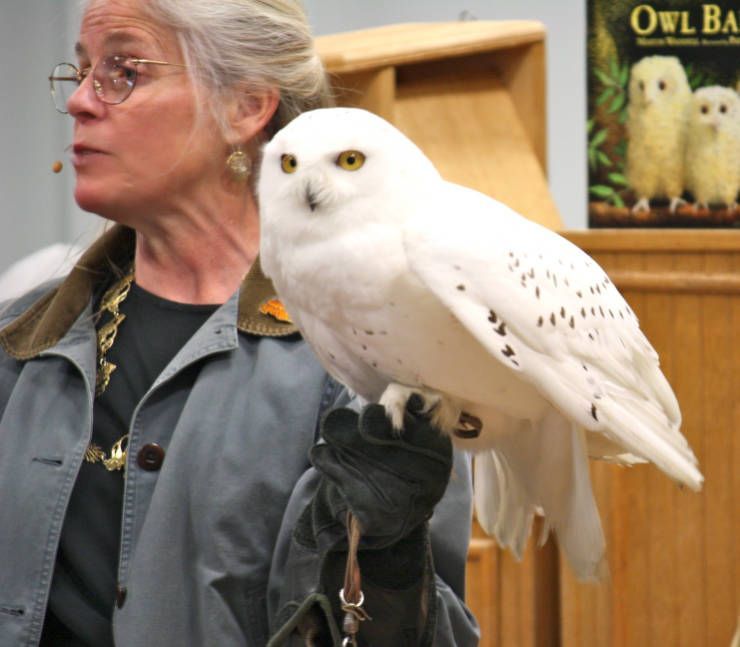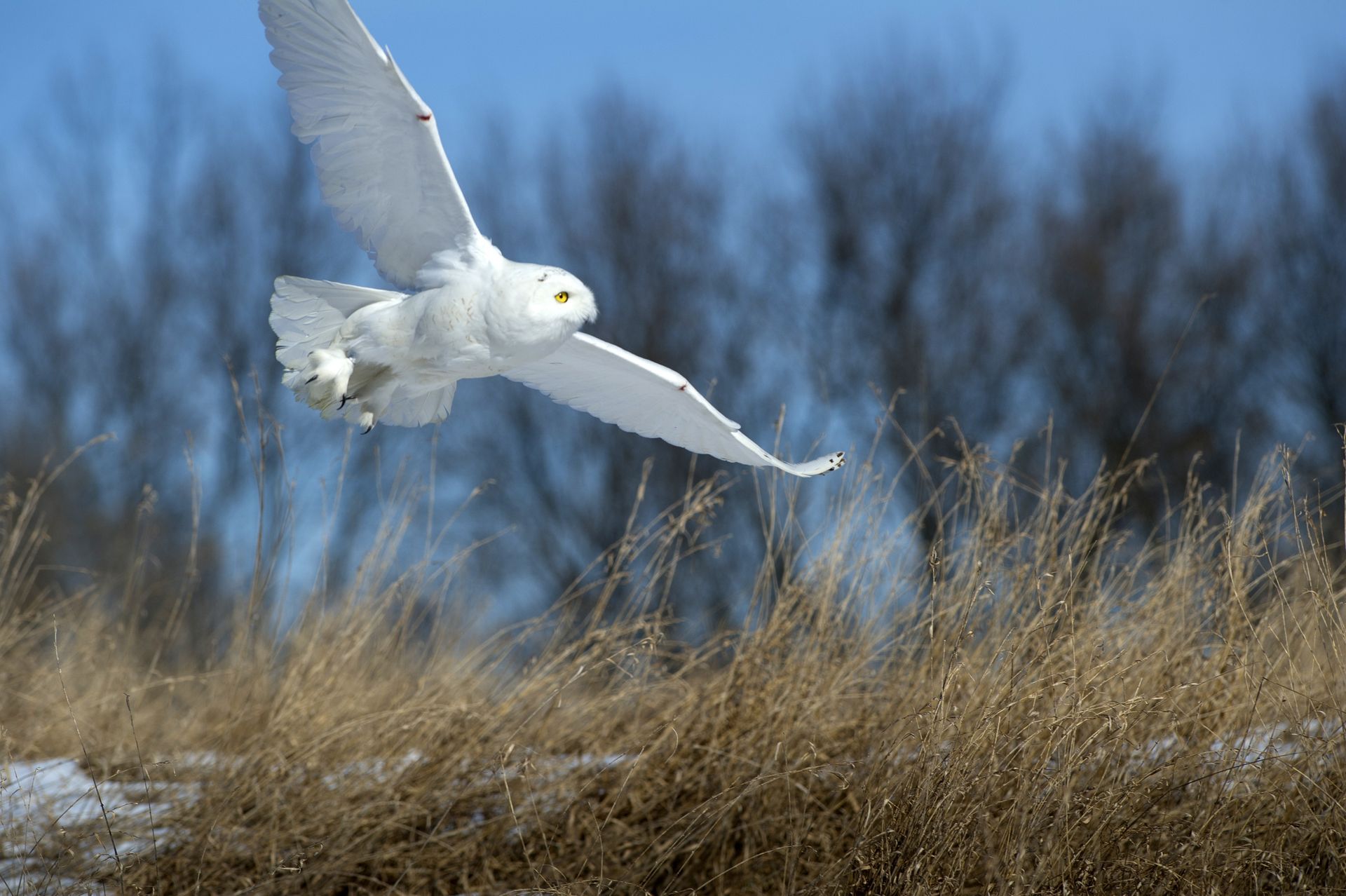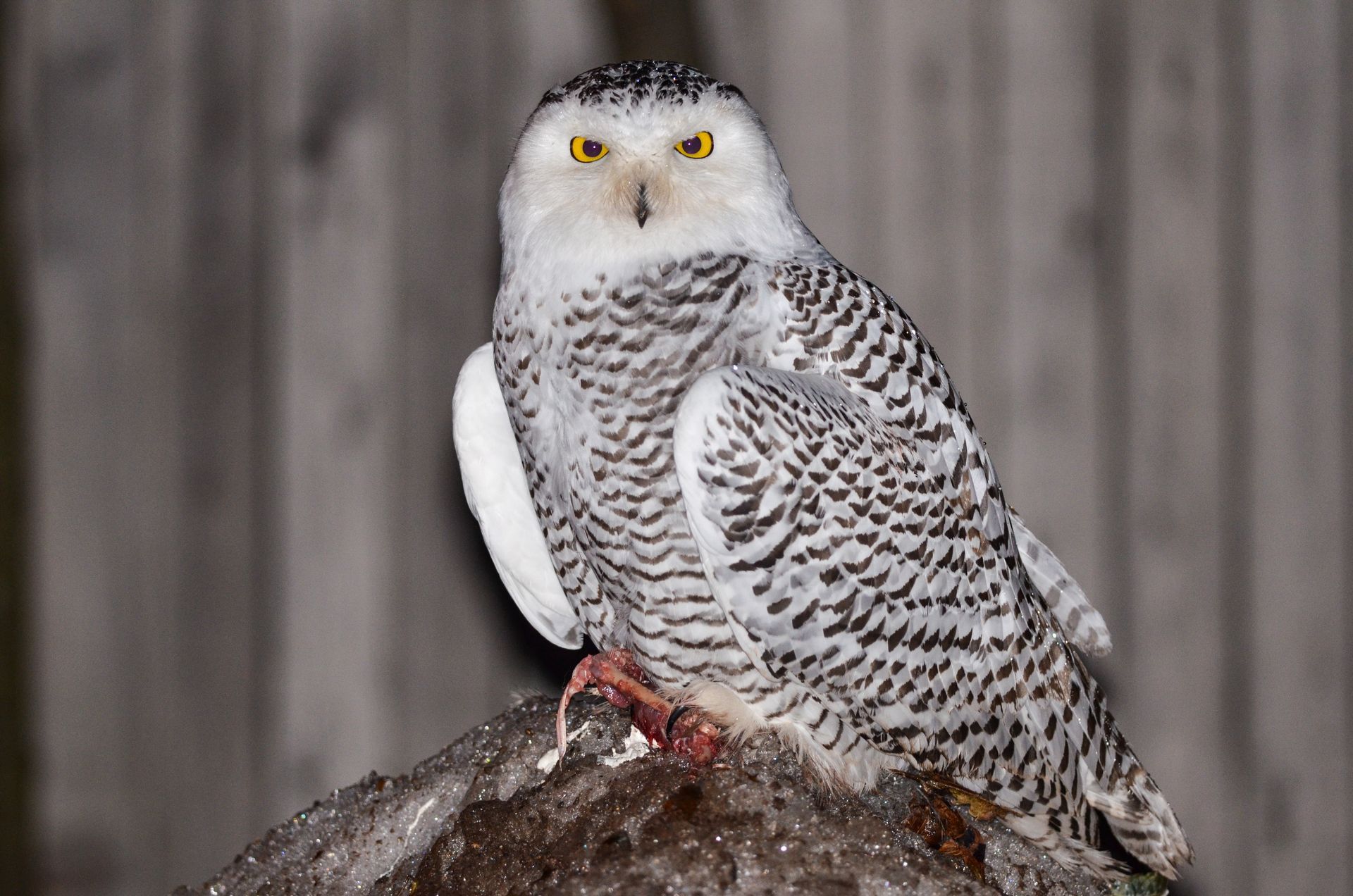Species Spotlight: The Rusty Snowy Owl
Although winter may be coming to an end, Michigan is still subject to receive snow throughout the month of March. The Upper Peninsula does not normally see the end of winter until April or even May, whereas spring comes much sooner in the southern Lower Peninsula. Cold weather and snow mean that winter residents still might hang around, and one species in particular has been turning heads in recent weeks. Located in Michigan’s Thumb area, a rufous (or rusty) snowy owl was recently spotted in Huron County near the edge of a field. Several photographers jumped at the opportunity to capture this rare phenomenon, likely due to a genetic mutation according to a researcher with Michigan State University. Although the rusty snowy owl is not an actual species, it’s fascinating how genetic mutations in specific individuals can dramatically alter their appearance and make them stand out. A normally white snowy owl that has reddish feathering is at a higher risk for predation because they stand out, but it is still an incredible sight to see.
Identification
Snowy owls are best identified by their large size, bright white feathers, and piercing yellow eyes. There are slight variations in coloring between males and females as well; adult males range from pure white to white with some brown spots, and females are white with darker barring throughout their bodies (Cornell University Lab of Ornithology). Juvenile snowy owls also tend to have barring spread throughout. In general, snowy owls also have rounded heads that rarely show ear tufts. Additionally, males tend to become whiter as they age. Snowy owls also have large feet that are covered in feathers to protect them from the cold (University of Michigan Museum of Zoology).
Habitat
Snowy owls prefer to inhabit treeless, wide-open tundra spaces. They may also inhabit lowland salt grass meadows and poorly drained freshwater meadows according to the University of Michigan’s Museum of Zoology. It is thought that snowy owls occupy these specific areas for hunting purposes. In Michigan, they are most commonly seen near large open fields and have even been known to hang out near airports. When food is scarce, they migrate south to warmer climates in winter with prime winter habitat being located in the Great Plains region (University of Michigan Museum of Zoology). Many snowy owls that migrate to Michigan for winter are thought to have traveled from Canada around Quebec. Additionally, snowy owls often hunt on the ground, so they prefer rolling terrain with a good vantage point to spot prey (Cornell University Lab of Ornithology). For this reason, they will perch atop fenceposts, buildings, or telephone poles to get a better view of the landscape.
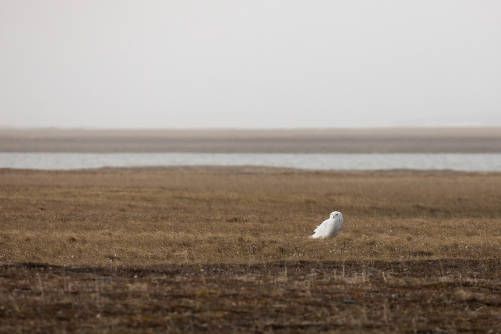
Diet
The diet of snowy owls consists of mostly small mammals, particularly lemmings. Lemmings are small rodents found in tundra and alpine regions (University of Michigan Museum of Zoology). Snowy owls will also consume other rodents, rabbits, weasels, seabirds, ducks, and geese (National Audubon Society). They are very agile and able to catch small birds with ease. When hunting, snowy owls sit very still in the same spot for hours to scan the landscape for potential prey. Visually scanning the area and blinking their big eyes is common for snowy owls because they can swivel their head 270 degrees, or three-quarters of the way around (University of Michigan Museum of Zoology). Once a food source is spotted, they fly down from their perch or sometimes run on the ground to pounce on it and swallow it in a single gulp (Cornell University Lab of Ornithology).
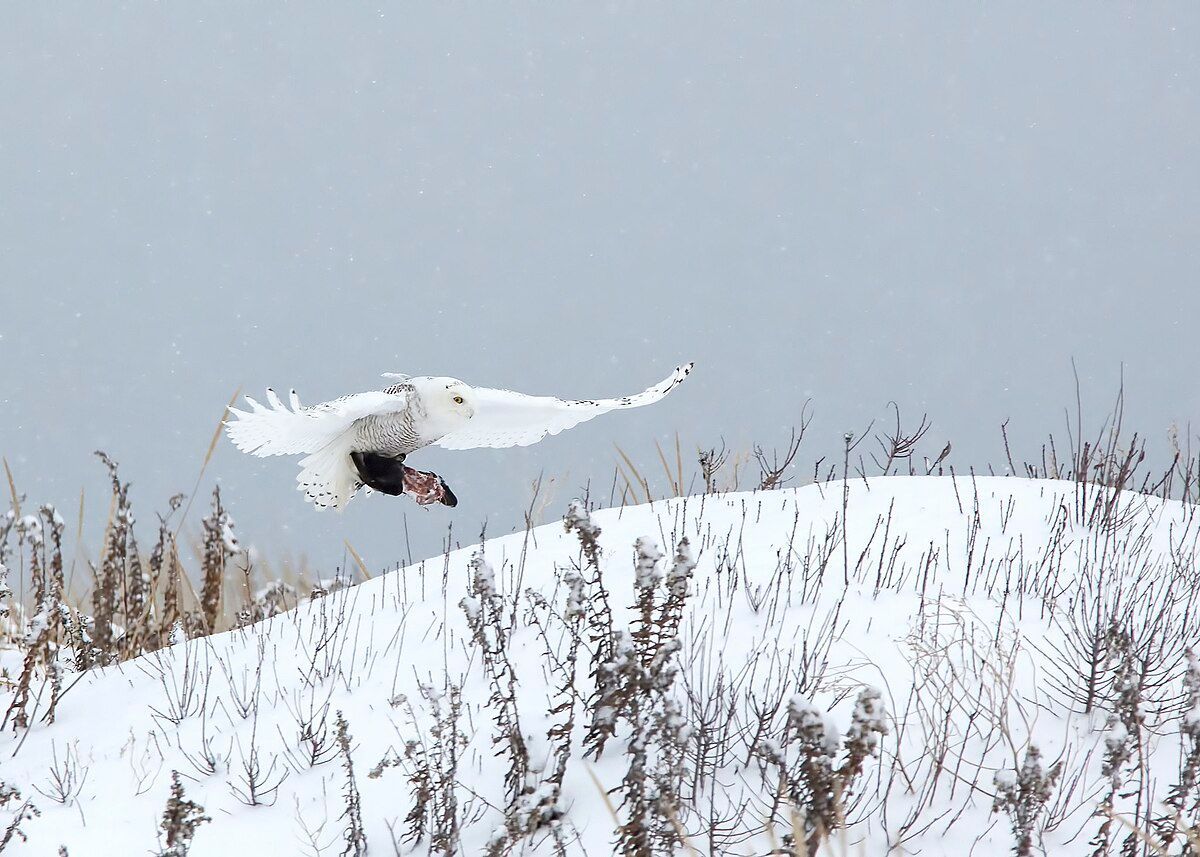
Behavior
Snowy owls are mostly solitary and territorial, with males establishing territories on their breeding grounds and using threat postures and vocalizations to defend them (University of Michigan Museum of Zoology). Territory size can vary with prey abundance. Additionally, snowy owls are migratory and generally move south during the winter months. However, migration can be unpredictable and is mostly based on prey abundance rather than seasonal variation in weather patterns. Snowy owls migrate nomadically and move where prey and food sources are high.
Within a snowy owl's territory, it is thought that the male selects the territory, and the female selects the nest site inside the territory (Cornell University Lab of Ornithology). Females will build their nest right on the ground, scraping out a shallow hole in the dirt and reshaping it over several days. Their clutch size is normally 3-11 eggs that incubate over a period of 32 days. Once hatched, both parents will feed and defend the chicks from predators (University of Michigan Museum of Zoology). The chicks will begin to leave the nest before they can fly around 14 to 26 days after hatching, but the parents will continue to feed them for 5-7 weeks until they can hunt for themselves.
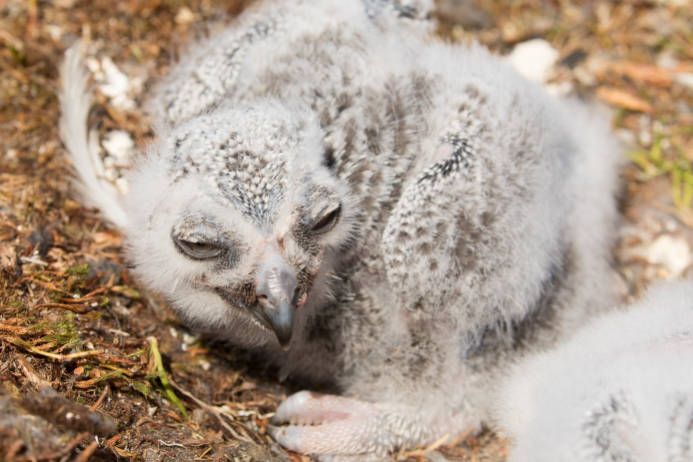
Conservation
Populations of snowy owls are in decline. Globally, numbers have declined by as much as 64% since 1970 (Owl Research Institute). They are listed as Vulnerable by the International Union for Conservation of Nature (IUCN) Red List. The IUCN also estimates the number of mature individuals to be between 14,000 and 28,000. Additionally, the U.S. Fish and Wildlife Service lists the snowy owl as a Bird of Conservation Concern (2021). Common causes of mortality in these birds include collisions with vehicles and airplanes, gunshot wounds, electrocution from utility lines, and fishing tackle entanglement (University of Michigan Museum of Zoology).
Luckily, snowy owls are protected under the Migratory Bird Act and the CITES (Convention on Internation Trade in Endangered Species of Wild Fauna and Flora) Treaty Appendix II. Like all raptors, they are also protected from hunting and trapping and their remote breeding grounds in the Arctic are relatively free from human disturbance (Cornell University Lab of Ornithology). If you ever come across a snowy owl, the U.S. Fish and Wildlife Service offers a few tips to help keep you and the bird safe. They include keeping a respectful distance, never using feed to lure an owl, and observing without disturbing.
To help aid efforts in snowy owl conservation, a collaboration among dozens of scientists and organizations called Project SNOWstorm was formed. Project SNOWstorm is a snowy owl project that aims to track winter movements and migration patterns using transmitters. The project was founded during the historic snowy owl irruption, or invasion in 2013-14 to expand knowledge of snowy owls and their wintering patterns. These organizations work together each year to trap snowy owls and place transmitters on them which track where the owls are, which habitats they are using, and more. This telemetry tracking work has helped answer questions about a snowy owl’s life cycle, its winter movements, and even how to keep them away from airports and out of harm’s way.
